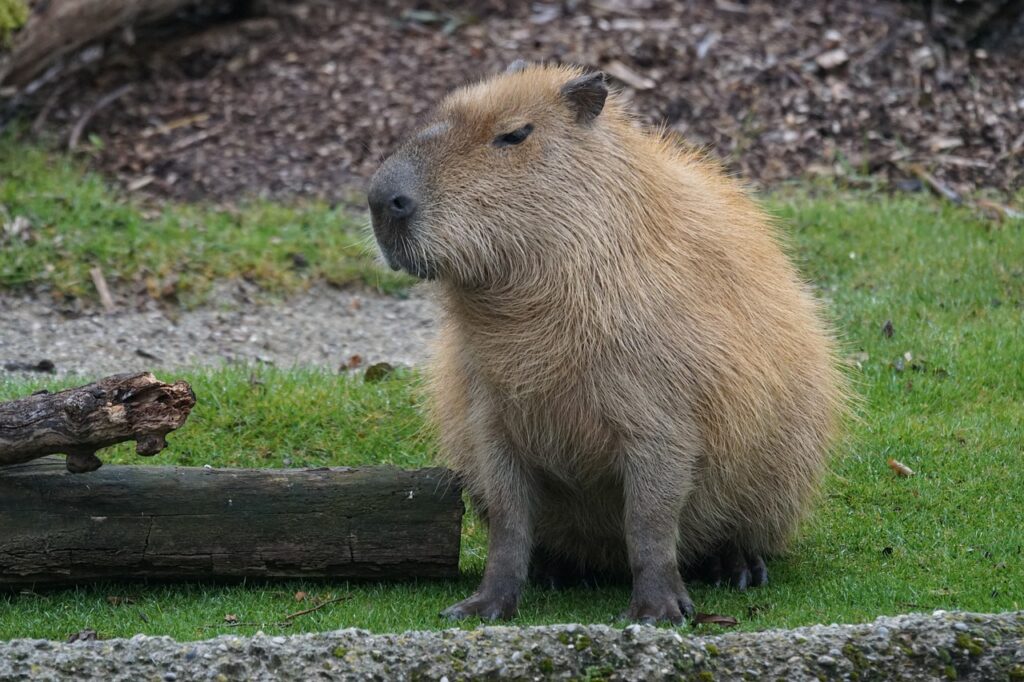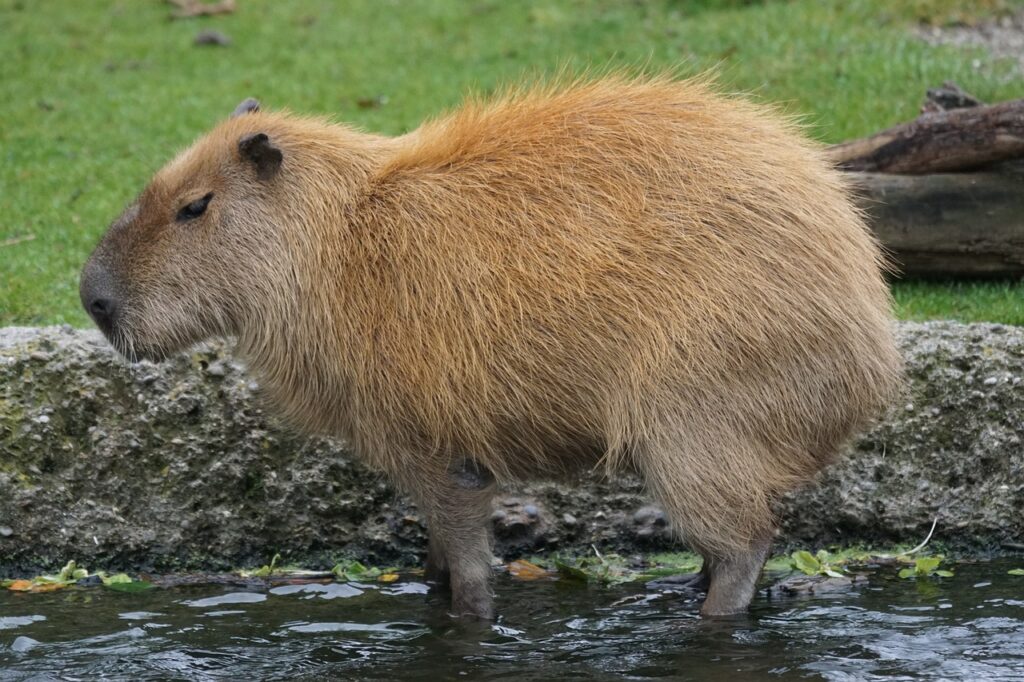Picture this: a giant, cuddly rodent that’s basically the golden retriever of the animal world. Sound too good to be true? Welcome to the wonderful world of capybaras – nature’s most unexpectedly adorable social butterflies!
What Exactly is a Capybara?
Let me break it down for you. Capybaras are the largest rodents on the planet, native to South America, and they’re basically walking, breathing friendship goals. Imagine a guinea pig that’s been supersized – we’re talking about an animal that can weigh up to 65 kg (that’s around 140 pounds for my imperial friends).
Why Capybaras Are the Ultimate Social Animals?
These chunky champions aren’t just big; they’re incredibly social creatures. Here’s why they’re the most friendly rodents you’ll ever encounter:
Chill Vibes Only: Their relaxed demeanor makes them the ultimate hangout buddy in the animal kingdom.
Social Butterflies: Capybaras live in groups of 10 to 20 individuals, sometimes even forming massive herds of 100!
Friendship Know-Bounds: They’re known to befriend literally any animal – birds, crocodiles, monkeys, you name it.

Real-Life Capybara Friendship Stories
I once watched a documentary that showed a capybara chilling with a group of different animals, and honestly? It was like watching the most bizarre but heartwarming group therapy session in nature.
Surprising Animal Friendships
Capybaras have been documented:
Tolerating baby animals from completely different species
Letting birds sit on their backs
Sharing space with crocodiles without a hint of fear
The Science Behind Their Friendliness
It’s not just cute – there’s actual science backing up their social superpowers. Their hormonal makeup and social structure encourage cooperation and peaceful interactions. They’re basically the diplomats of the animal world, creating harmony wherever they go.

Why Humans Can’t Get Enough of Capybaras
They’re Cute: Those round bodies and expressive faces are impossible to resist. They’re Chill: No drama, just pure relaxation. They’re Inclusive: They welcome pretty much anyone into their circle.
Can You Keep a Capybara as a Pet?
Before you get too excited, hold up. While they’re incredibly friendly, capybaras aren’t typical pets. They need:
- Large spaces
- Access to water
- Special diet
- Specific climate conditions
Pro tip: In most places, you’ll need special permits and extensive knowledge to keep them legally and ethically.

The Global Capybara Fan Club
From internet memes to wildlife documentaries, capybaras have stolen hearts worldwide. Their ability to be simultaneously massive and adorable has turned them into global celebrities.
Regularly Posed Inquiries

Interesting Capybara Trivia
Native to South America Can hold their breath underwater for up to 5 minutes Considered a culinary delicacy in some regions Play a crucial role in their ecosystem

Final Thoughts: Nature’s Friendship Ambassadors
Capybaras remind us that friendship knows no boundaries. In a world often divided, these giant rodents show us the power of acceptance, social connection, and pure, unadulterated chill.
So the next time you’re feeling stressed or antisocial, just ask yourself: “What would a capybara do?” Chances are, they’d just relax and welcome everyone to their party.
Pro Capybara Tip: Always approach wildlife with respect. While capybaras are friendly, they’re still wild animals best appreciated from a safe distance.
Disclaimer: No capybaras were disturbed in the making of this blog post – they were probably too busy making friends with literally everyone.
Unlock the secret to your pet’s vitality! Discover how UltraK9 Pro Primal Nutrients can transform your furry friend’s health with ancient, natural ingredients. Give your pet the life they deserve – Click here to learn more and join the thousands of happy pet owners making the switch today!
The Tale of Carlos, the Friendly Capybara
In the heart of the lush South American wetlands, where the rivers wound like shimmering ribbons through the emerald landscape, there lived a capybara named Carlos. Carlos wasn’t just any capybara; he was known far and wide as the “King of Chill.” His laid-back attitude and magnetic charm made him the heart of the wetlands community. Everyone, from the smallest dragonfly to the most formidable jaguar, knew and adored Carlos.
Carlos had a special gift: he could make friends with anyone. His kind eyes, warm demeanor, and unwavering sense of calm seemed to put even the most nervous creatures at ease. Birds often perched on his back, using him as a floating rest stop while he lounged in the river. Monkeys in the treetops called out cheerful greetings whenever he waddled by, and turtles basking on rocks would eagerly slide into the water to join him for a swim. Even the shy caimans, who typically avoided social interactions, found themselves drawn to Carlos’s tranquil energy.
One day, Carlos had an idea that would forever change the dynamic of the wetlands. He decided to host a grand “River Soiree,” an event where every creature, big or small, predator or prey, could come together to celebrate the beauty of their shared home. Carlos sent out invitations by word of mouth, relying on the keen ears of the jungle residents to spread the news. The idea quickly sparked excitement, after all, who could say no to Carlos?
As the sun dipped low in the sky, casting a warm, golden glow over the wetlands, the animals began to gather. Birds arrived first, flitting down from the treetops and chirping merrily as they perched on Carlos’s back. Next came the turtles, who splashed into the water and swam in lazy circles around their charismatic host. Frogs, deer, capybaras, and even jaguars made their way to the soiree, each one curious to see what Carlos had planned.
The atmosphere was magical. Carlos led the animals in activities that celebrated the simple joys of life. They floated in the river’s gentle current, basked in the sun on soft riverbanks, and nibbled on the freshest grasses and aquatic plants. There was no fear, no rivalry, just a sense of unity and peace. Carlos, with his calm and friendly nature, reminded everyone that despite their differences, they were all part of the same ecosystem, connected by the water, the land, and the air they shared.
As the evening wore on, even the shyest of creatures, like a young caiman who had never dared to approach others before, found themselves joining the fun. Encouraged by Carlos’s unwavering acceptance, the caiman cautiously swam closer, earning a warm smile and an invitation to join the floating circle of friends.
From that day forward, the wetlands became a beacon of harmony. Carlos’s River Soiree had shown the animals that coexistence wasn’t just possible, it was beautiful. Carlos earned a new title that day: Ambassador of Peace, a symbol of what could be achieved when kindness and connection were placed above all else.
The story of Carlos, the friendliest capybara, spread far beyond the wetlands. Travelers and explorers who visited the region shared tales of the remarkable capybara who had united a diverse array of animals. To this day, Carlos’s legacy lives on, reminding us all to embrace kindness, cherish our shared spaces, and savor the simple, joyful moments that make life extraordinary. 🌿
